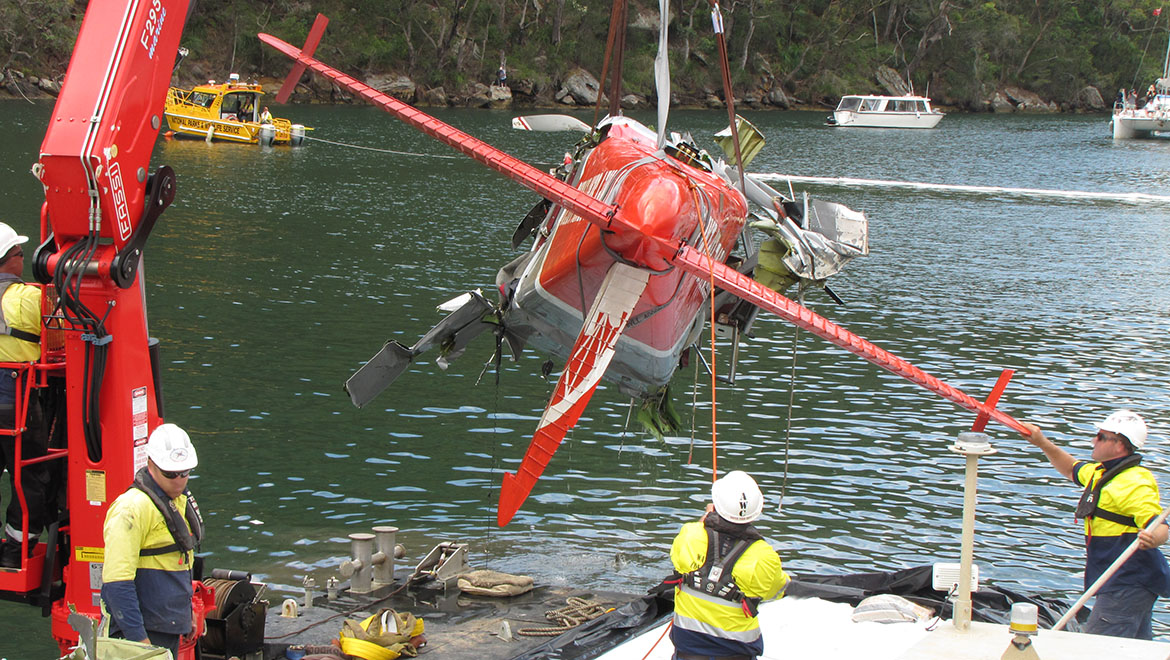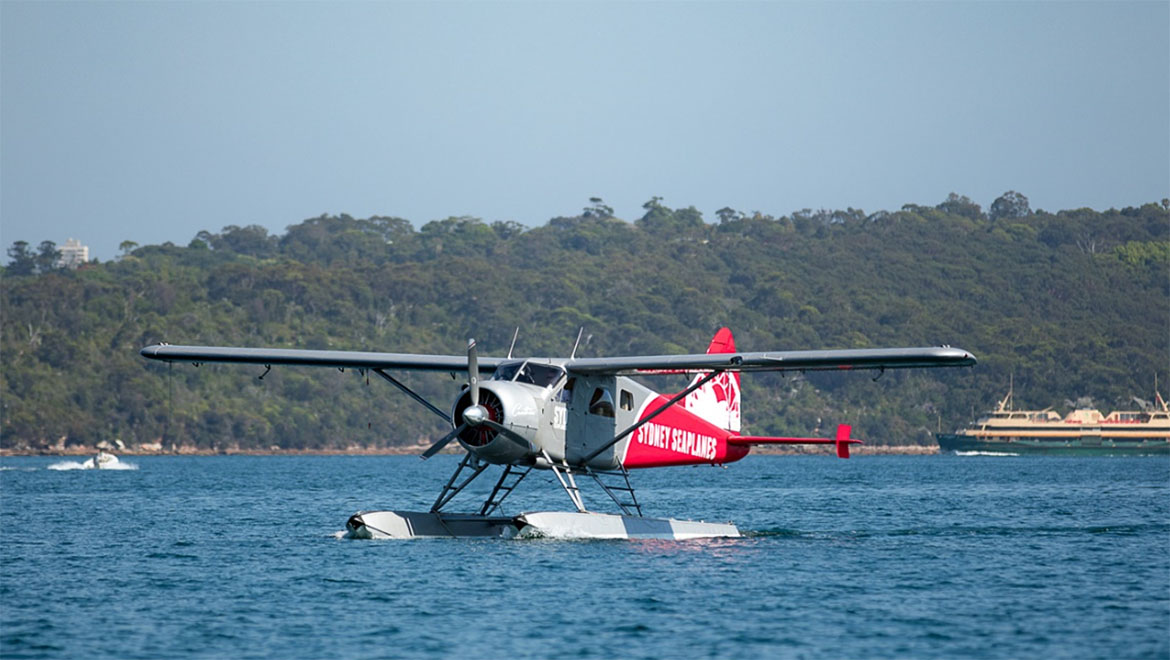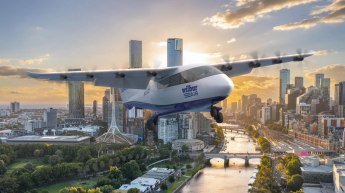
The Australian Transport Safety Bureau (ATSB)’s continuing investigation into the crash of a Sydney Seaplanes Beaver floatplane into Jerusalem Bay, north of Sydney on December 31 2017 which killed all six people on board will continue to examine the pilot’s health.
The ATSB released its interim factual report into the accident involving de Havilland Canada DHC-2 Beaver VH-NOO on Thursday morning.
It finds that the aircraft had no pre-existing mechanical and maintenance issues, that all maintenance was up to date, that the pilot was appropriately licenced, and that the weather at the time was benign.
Further, a Civil Aviation Safety Authority regulatory and safety review of Sydney Seaplanes after the accident found no evidence of non-compliance with its air operator’s certificate (AOC).
“With no onboard data available from the aircraft itself, transport safety investigators have been able to use witness statements and images retrieved from one of the passenger’s cameras to determine what happened in the lead up to this accident,” the ATSB’s executive director, transport safety, Nat Nagy, said in a statement.
“The ATSB’s investigation is continuing and will now look at a number of factors surrounding the pilot’s health and medical history.”
The pilot was highly experienced, with over 10,700 flying hours in his logbook, of which an estimated 9,000 hours were on floatplanes. First learning to fly in 1997 he was appropriately licenced, holding a Canadian ATPL and an Australian CPL with single‑engine and multi-engine ratings, floatplane, manual propeller pitch control and retractable undercarriage endorsements, and a multi‑engine instrument rating.
He regularly flew Sydney Seaplanes’ Beaver and Cessna Caravan floatplane aircraft, last completed a flight review in June 2017, and colleagues and others who had spoken to him “prior to this flight and throughout the day reported that he appeared normal, upbeat and happy”.

“We have engaged an aviation medical specialist to assist with reviewing the pilot’s medical records as well as the autopsy results, which the ATSB has recently received over the past month,” Nagy said.
“That review is now underway and we expect the results to appear from that over the coming months.”
The ATSB noted that Sydney Seaplanes voluntarily implemented a number of “proactive” safety measures in the wake of the accident, including immediately suspending flying operations, and not resuming flying Beaver aircraft until it was satisfied the were no mechanical or fuel contamination issues with VH-NOO.
All Sydney Seaplanes pilots also underwent re-currency training on frequently-used authorised landing areas and refresher helicopter underwater escape training. The company also fitted all its aircraft with GPS tracking devices, “which provide real-time positioning information and flight data”.
The ATSB says its ongoing investigation will include consideration of the “fitment of lightweight flight recording systems … for passenger operations in aircraft with a maximum takeoff weight less than 5,700kg”.
With no onboard recording devices on the aircraft, investigators have evidently not been able to determine why the Beaver entered Jerusalem Bay.

“After taking-off from Cottage Point, the aircraft climbed and turned right into Cowan Creek heading towards the main Hawkesbury River into the prevailing wind on a standard departure path.
“However, while over Little Shark Rock Point, the aircraft made a right turn, reversing its direction. The aircraft levelled out before flying on a straight path directly towards Jerusalem Bay with a tailwind. Shortly after, the aircraft entered Jerusalem Bay at an altitude below the surrounding terrain height,” the ATSB’s summary of the interim factual report reads.
“As the aircraft approached Pinta Bay the aircraft was witnessed to make a steep right turn. During the turn, the aircraft’s nose suddenly dropped prior to colliding with the water in a near vertical position.”
“It is important to note that the ATSB’s investigation into this tragic accident is ongoing, so we are constrained on the information we can release publicly at this time,” Nagy said.
“However, the interim report, which we released today, does provide a factual update on the investigation so far. The report does not include any findings or recommendations – these will be provided in a final report, which we do anticipate to be released in the first half of next year.”
The ATSB’s final report is now expected to be released in the second quarter of 2019.















